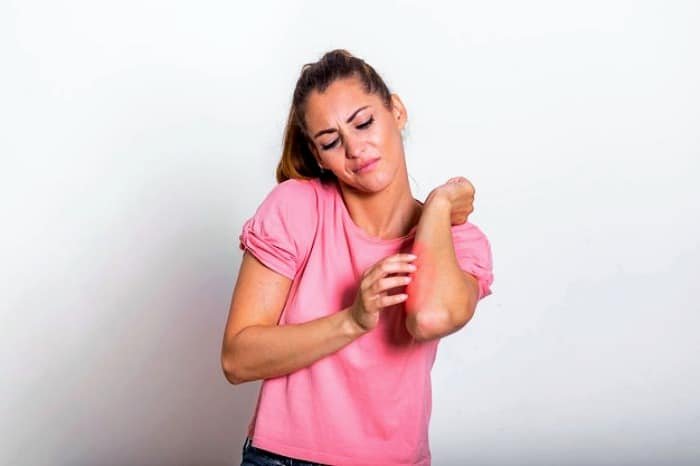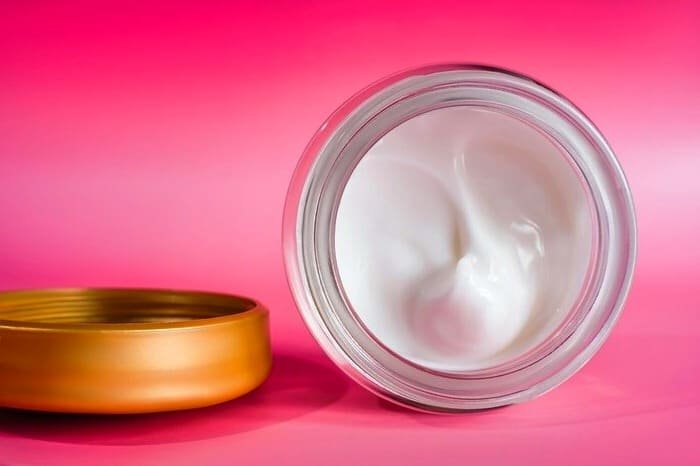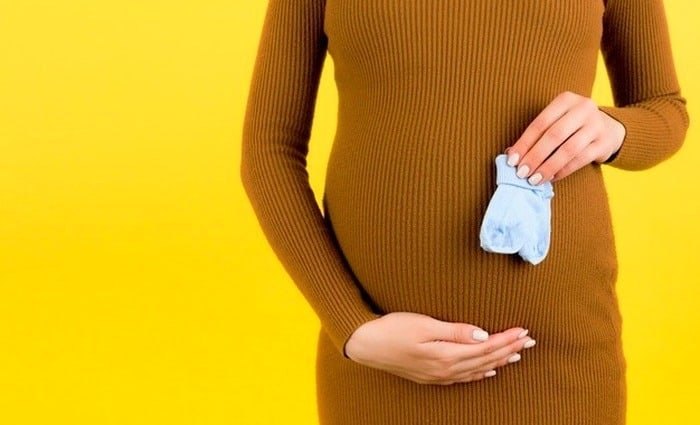The Most Common Skin Problems and Changes DuringPregnancy
Becoming a mother is a cherished dream for many women. While some women are fortunate enough to go through pregnancy easily and become even more beautiful and strong, others face challenges including skin problems. As these issues affect their beauty, they can also disrupt their lives. In this part ofSelMagzwe will discuss 12 skin problems related to the body and face that can be found in reputable sources and seen during pregnancy, but make sure to consult your doctor before applying these tips.12 Skin Problems of the Body and Face During Pregnancy1. Acne:

During pregnancy, women encounter numerous issues such as morning sickness, nausea, mood swings, and skin problems. Common skin problems faced during this time include
acne
caused by the hormoneprogesterone.To combat acne, follow these tips:Acne consists of bumps and blemishes on the skin which can be particularly sensitive during this time. To prevent oily skin, use oatmeal-based scrubs. However, medications for acne should be avoided during pregnancy as they can cause birth defects. Sebum generates an environment suitable for bacteria growth, leading to acne inflammation. Acne can appear at any point during pregnancy and can be mild, moderate, or severe. To reduce discomfort, pregnant women should wash their faces daily with gentle cleansers andsoaps.
Use body scrub only for washing your hands.
-
Moreover, if you moisturize your skin, choose oil-free moisturizers.Avoid squeezing pimples to prevent scarring.If your acne is very severe, consult a dermatologist. Pregnant women should avoid medications liketetracycline,monocycline, isotretinoin,
- and doxycycline,
- as they can cause birth defects.
- For acne treatment, use natural and safe solutions such as sulfur, tea tree oil, or lactic acid.
- 2. Itching:Itching is one of the most significant skin issues during pregnancy. If you experience skin itching, know that you are not alone; many expectant mothers will encounter this problem. Usually, due to increased estrogen, you will feel itching primarily around the bust, abdomen, and legs, and in addition, women may face other skin issues such asdry skin,eczema,psoriasis,
- and more. Some are lucky as their symptoms don’t worsen, but others endure severe discomfort, struggling to sleep at night, and find it hard to function during the day due to the itching.
How can you relieve skin itching?
Avoid hot baths,use gentle soaps,gently massage itchy areas with oatmeal mask,keep the itchy skin cool,limit sun exposure,and wear breathable cotton clothes.If your skin develops rashes or bumps from itching, consult a doctor for further instructions. Some women only feel itching, but others may experience weakness,
nausea,
- loss of appetite,
- jaundice, etc. If you suffer from cholestasis, seek medical advice, as this can lead to birth defects.
- To relieve skin itching, you may use certain topical ointments, and the good news is that it generally disappears after giving birth. Throughout your pregnancy, you may feel inadequate, and this itching can spread to your legs, arms, back, buttocks, thighs, hands, face, and neck. Additionally, some women might suffer from prurigo.
- Prurigo occurs due to a deficiency during pregnancy, typically in the second or third trimester, leading to bothersome itching. Normally, prurigo resolves after childbirth, and it does not pose a risk for your newborn’s skin issues.
- 3. Mole Changes:
- Changes in moles are another skin problem during pregnancy; moles may darken and enlarge due to high estrogen levels. However, if a mole changes unevenly in size, color, or shape, see a doctor promptly, as this can indicate skin cancer.
4. Melasmaand New Under-Skin Pimples:Melasma is another common skin issue during pregnancy, often referred to as the ‘pregnancy mask.’ This condition arises from higher estrogen levels that increase melanin production. In darker skin, melasma appears even more pronounced, typically on the nose, upper lip, forehead, and cheeks. To treat this skin condition, daily sunscreen use is essential, and if you need to go outside, use protective skin care products containing vitamin C, lactic acid, and glycolic acid. This issue causes your skin to darken during pregnancy, and while under-skin pimples may emerge in the second trimester, they may fade or disappear after the baby’s birth.To get rid of melasma, use creams as advised by your doctor, and avoid sun exposure from 10 AM to 2 PM. When necessary, definitely use sunscreen.5. Stretch Marks:
Stretch marks typically appear during pregnancy, especially in the last trimester as your belly expands. To alleviate this issue and stimulate
collagen

production, use animal oil or
coconut oil
for massages. Besides stretch marks, pregnant women may encounter additional skin issues such as discoloration and pregnancy spots due tohormonal changesand immune system adjustments. This issue can also be genetic; if your mother or sister experienced it during pregnancy, your chances of having similar problems due to
weight gain
and pregnancy also increase. Generally, stretch marks start out red and shiny before fading to white or silver, appearing on breasts, buttocks, and thighs. This issue worsens with an expanding belly. Depending on your skin tone, the colors may range from dark brown, purple,
brown,
or pinkish-red. If you gain weight quickly or have a multiple pregnancy, the risk of developing stretch marks increases significantly.To improve this concern, keep your belly, buttocks, thighs, and hips moisturized consistently with natural substances.6. Linea Nigra:This skin issue is common among all pregnant women. If you have experienced pregnancy, these lines will be familiar to you. This line stretches from the center of the navel to the center of the breastbone, and may even extend higher. In the second trimester, this line darkens, especially in women with darker skin, and it can last for months after childbirth.7. Skin Discoloration:Unfortunately, some women go through this problem. In darker skin, the face becomes darker, under-skin pimples and moles enlarge, and some might even notice new moles on their faces. Additionally, the nipples and the area around them will darken. In the first three months of pregnancy, your palms and feet may turn red, and you may experience itching in your legs. In fact, 70% of pregnant women face these issues, so you’re not alone. These changes are notably visible on the forehead, cheeks, upper lip, and nose.To alleviate these problems, pay attention to the following tips:Avoid exposing your skin to sunlight, especially using sunscreen when you go outside.Protect your skin by wearing long-sleeved shirts and wide-brimmed hats.Use light skin creams and gentle cleansers.After giving birth, consult your doctor for the best treatments, such as laser therapy, to lighten darker areas of skin. In some cases, skin discoloration maysignal canceror other skin issues, so if this problem is accompanied by bleeding, skin redness, sensitivity, or pain, seek medical assistance immediately.8. Blood Vessels:Spider veins are another skin issue during pregnancy, particularly visible in slender women. Spider veins are more common on the face, legs, and upper body, and they take longer to reduce compared to other skin problems. Consult a doctor if you require injections for this condition.
Varicose veins are also a common skin problem during pregnancy, where veins become swollen and visible near the skin’s surface. They typically appear purple or blue. Varicose veins can lead to swelling and heaviness in the legs. Pregnant women often worry about this issue as these blood vessels can disrupt heart function. Since blood volume increases during pregnancy, there’s added pressure on the veins, giving them less chance to rest. If you have a family history, you may be at risk, and rapid weight gain also increases the likelihood of developing

varicose veins.
Can varicose veins be prevented? The answer is maybe; you can partially prevent them or limit their appearance.
Here are some tips to improve this issue:
Exercise regularly.
Maintain a balanced weight and avoid rapid weight gain.
- Give your legs a rest while sitting.
- Avoid crossing your legs while sitting.
- Avoid prolonged standing and sitting, and make sure to take breaks.
Enjoy better sleep by placing a pillow behind your back and sleeping on your left side.Use special stockings.9. Skin Tags:
Skin tags are a type of painless tissue or growth that is made of your own skin. If you notice these small polyps, you may be experiencing them. These tags are usually seen under the breasts, on the neck, arms, and back, and they may disappear after multiple pregnancies. Skin tags can be surgically removed.
10. Skin Sensitivity:
Skin sensitivity is a problem that exists in most pregnancies. Women’s skin may easily become red, bruised, or dark due to using scrubs and lotions, resulting in many opting for gentle washing products or natural soaps for cleansing and exfoliating their faces. To alleviate skin sensitivity, avoid fragrances, parabens, and triclosan to protect the health of your skin and your child.11. Dry Skin:While some women suffer from acne or sensitivity, others complain about dry skin. Dry skin is one of the common issues alongside other skin problems during pregnancy. The best and easiest way to treat this issue is by drinking plenty of water and using moisturizers and skin softeners while also leveraging various natural lotions to limit dryness. Avoiding hot showers and using
oatmeal

in the bath and applying oils such as
- coconut
- and olive oil can relieve skin dryness.
- 12. Skin Irritations:
- Itching and redness of the skin during pregnancy can be quite unpleasant. In fact, itching in the hands and feet may signal liver issues and in pregnant women can indicate cholestasis.
- Another common issue during pregnancy is pupp (short for pregnancy papules and plaques), which typically appears on the abdomen. This problem is not harmful to children but can be bothersome for you.
- Pupp usually occurs early in pregnancy and is caused by genetic factors and hormonal changes in the body.
- To mitigate this issue, pay attention to the following tips:
Use a bath with
baking soda
and oatmeal.
Apply cold compresses to the skin.
Coat the skin with
aloe vera.If your condition worsens, consult a doctor.Skin ProblemsSkin Problems During PregnancySkin Itching

Skin Itching During Pregnancy
Skin Stretching
Skin Sensitivity During Pregnancy
Pregnancy
Skin Tags During Pregnancy
- Dry SkinSkin Changes During PregnancyWeek by Week Pregnancy
- Pregnancy Week by Week
- Skin Changes During PregnancyAcne TreatmentProgesterone Injection
- Oily Skin Treatment







